Photos: Mysterious Human Ancestor Wielded Oldest Stone Tools
Inn the desert badlands of northwestern Kenya, scientists have discovered stone tools that date back some 3.3 million years, long before modern humans were on the scene. The tools are now considered the oldest stone tools to date. Here's a look at the excavation site and ancient tools discovered. [Read the full story on the oldest stone tool discovery]
Old tools
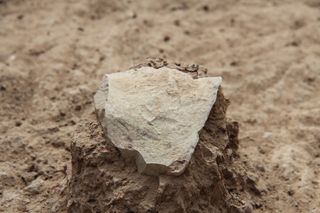
A stone tool unearthed at the Lomekwi 3 excavation site next to Lake Turkana in Kenya. Credit: MPK-WTAP
Ancient sediments
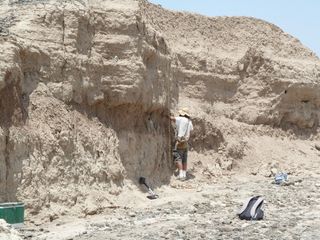
The researchers used a couple of techniques to date the sediments where the tools were found. The set a "floor" for the age by looking at a layer of volcanic ash, which matched the ash found elsewhere dating to 3.3 million years ago. Also, Chris Lepre of Columbia University's Lamont-Doherty Earth Observatory dated the artifacts by examining magnetic minerals above, below and around the location of the tool discovery. The magnetic minerals serve as clocks because the Earth's magnetic field periodically flips. By tracing the polarity of these mineral samples and then looking at records of magnetic field changes, the scientists dated the site to 3.33 million to 3.11 million years. Credit: West Turkana Archaeological Project
Unearthing tools
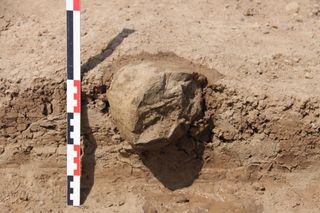
The researchers aren't sure who created these tools, saying perhaps an as-yet-unknown ancient extinct human species may have banged the rocks together to form the tools. Other contenders — an Australopithecus species or Kenyanthropus platytops, whose 3.3-million-year-old skull was discovered nearby the site of the newfound tools in 1999. Here, the stone tool in situ unearthed at the Lomekwi 3 excavation site next to Lake Turkana in Kenya. Credit: MPK-WTAP
Sign up for the Live Science daily newsletter now
Get the world’s most fascinating discoveries delivered straight to your inbox.
Closer look
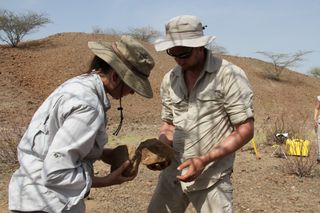
So how did this mysterious group craft these stone tools? Some scientists thought hominins started "knapping," or banging one rock against another to create sharp-edged tools so that they could cut meat from animal carcasses. However, the size and markings of the newfound tools suggest the individuals were doing something different, the researchers said. Rather, these individuals may have used the tools to break open nuts or tubers, bash open dead logs to snag insects or even some other use. Shown here, scientists Sonia Harmand and Jason Lewis examining stone tools found in Kenya. Credit: MPK-WTAP
Lucky find
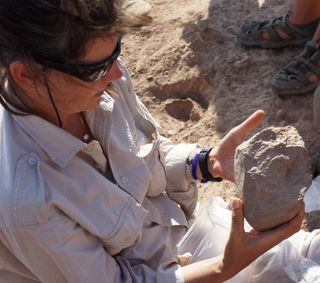
Sammy Lokorodi, a resident of Kenya's northwestern desert who works as a fossil and artifact hunter, led the way to a trove of 3.3 million-year-old tools. Credit: West Turkana Archaeological Project
Stone Tool features
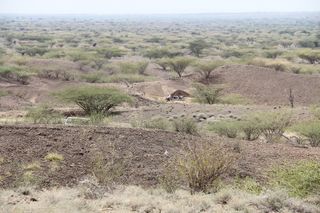
This area near Lake Turkana was once a partially wooded, shrubby environment, the researchers found after reconstructing the site's past vegetation from carbon isotopes in the soil and animal fossils. Credit: MPK-WTAP
Oldowan tools
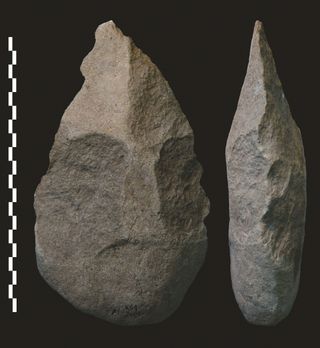
The tools unearthed at Lomekwi 3 predate the so-called Oldowan tools by about 700,000 years. Here, examples of hand axes found in Kenya, indicating early humans were using these stone tools some 1.8 million years ago. Credit: Pierre-Jean Texier, National Center of Scientific Research, France.
Jeanna Bryner is managing editor of Scientific American. Previously she was editor in chief of Live Science and, prior to that, an editor at Scholastic's Science World magazine. Bryner has an English degree from Salisbury University, a master's degree in biogeochemistry and environmental sciences from the University of Maryland and a graduate science journalism degree from New York University. She has worked as a biologist in Florida, where she monitored wetlands and did field surveys for endangered species, including the gorgeous Florida Scrub Jay. She also received an ocean sciences journalism fellowship from the Woods Hole Oceanographic Institution. She is a firm believer that science is for everyone and that just about everything can be viewed through the lens of science.












